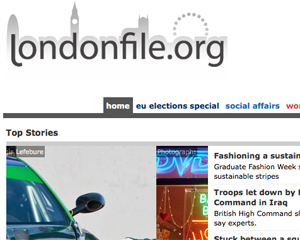PaidContent:UK has this week launched a series about online payment models, using the results of a poll conducted by Harris Interactive. Its first story reported that if newspaper groups were to begin charging for their websites, three quarters of users would abandon them in favour of a free alternative.
Only five per cent would pay for their favourite free news website
The research, which polled 1,188 British adults, found that among users who read a free site at least once a month as their top source of news, only five per cent would pay for that website, if such a payment model was introduced. Seventy-four per cent would find a free alternative news source; a further eight percent would continue reading the website’s free headlines only; and 12 per cent were not sure what they would do.
Long term subscriptions more attractive
Today’s update indicates that long-term subscriptions rather than micropayments, is ‘by far the most attractive option’ to consumers:
PaidContent:UK reported:
[Harris Interactive] asked users who read a news site at least once a month what their favoured option would be if they either chose to pay for their favourite site or were forced to pay by all news sites going pay-for:
- Per-article fees (ie. micropayments) are the favourite option for 21 percent.
- A day pass giving unlimited articles within a 24-hour period is favoured by 26 per cent.
- But a subscription of up to a year is the most desired model, supported by 54 per cent.
So what does this mean for micropayment models?
“There’s been a lot of buzz about micro-payment recently, and some prominent players, like Google have moved into this field,” said Andrew Freeman, the senior consultant with Harris Interactive’s technology, media and telecoms team.
“But there are massive challenges: and not just technical ones. From a simple business point of view, micropayments are disproportionately expensive to administer. Until you have an enormous volume and value, it just won’t be worthwhile.
“If consumers are going to give up their preference for single-subscription payments they can more easily check and monitor, they will need to have real confidence and trust in the brands they use. Micropayments will probably benefit only the very largest of companies.”
The survey
“The likelihood of newspapers instituting online charging models has become a hot topic. But the debate has mostly been led by what the publishers, and not the readers, want. We felt it was important to ask them and put some data in the public domain to inform publishers currently faced with this decision,” paidContent:UK editor, Robert Andrews, told Journalism.co.uk.
“Everything we’ve learned over the last few months tells us that there’s likely a bigger pay-for market for mission-critical, business and niche information than for general consumer news like sport, celebrity or perhaps even politics.”
Although they didn’t ask about specific news categories for this survey, paidContent:UK hopes to take these questions to consumers in a follow-up survey, he added.
Forthcoming stories will look at what price consumers would be happy to pay; and whether including a newspaper subscription would affect users’ willingness to pay online.
Surprising findings
“The top-line results are in line with my expectations. Conventional wisdom that has grown up around this debate in recent months has told us that, whilst there may be a pay-for market for mission-critical, business or niche news content, there’s enough plurality in the global consumer news market that readers can find an alternative source with just a few mouse clicks,” said Andrews.
“But some specific findings surprised me. For example, those in their teens and early 20s are many times more likely to say they’ll pay than those aged 35 to 54, whom I would have thought would have more disposable income.
“The working class and those on subsistence are nearly as likely to say they will pay as the upper middle class and middle class. And some of the regional variations, for example Wales are right up with Londoners on propensity to pay, and those in the north east of England far more likely to say they would continue reading their favourite site but only via its free headlines.”
Advice for the industry
“Publishers will need to carefully consider the effects of implementing a pay wall before mixing their cement – our survey suggests most of their readers would flee to a rival paper,” Andrews said.
“Sites must consider whether they have a value proposition unique enough to retain readers despite our findings. And they need to do the maths: raising a pay wall would reduce the number of eyeballs achieved for publishers’ advertisers, so are payments from five per cent of readers enough to offset the decline in ad income?”


